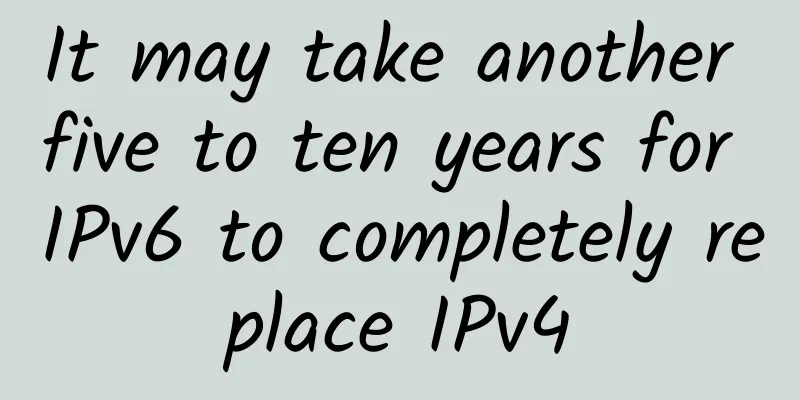A brief discussion on the prospects for the evolution of 5G core network

|
I recently read a paper about 5G core network, "Revolutionary Direction for 5G Mobile Core Network Architecture", which puts forward many guiding suggestions and prospects for the evolution from 4G to 5G. After reading it, I feel that I have benefited a lot, so I sorted out many of the valuable reference points and wrote this article based on my own experience, hoping to help beginners. If you do not understand it well or the expression is unclear, you are welcome to criticize and correct it.
The limitations of 4G core network EPC have been elaborated in detail in the previous two articles "Network Slicing - A Booster for 5G" and "About 5G - A Brief Discussion on SDN and NFV", so I will not repeat them here. There is no doubt that the future 5G core network should and can only overcome these defects of EPC in order to meet more and more diverse needs and achieve widespread and long-term applications. In order to meet various new service requirements, the design of future 5G core network architecture must address the following existing challenges:
For these problems to be solved, the 5G core network architecture shown in Figure 1 can be used as a reference. From a hierarchical perspective, the architecture can be divided into heterogeneous access networks and a unified core network 5GC. Heterogeneous access networks include various access technologies, such as 4G access, 5G access, WIFI access, etc. The unified core network 5GC consists of the following entities:
Next, we will discuss how this architecture solves the urgent challenges mentioned above. We believe that it will be of great reference value for the design of future 5G core networks. (1) Complete decoupling of the control plane and the user plane In the architecture shown in Figure 1, the control plane function is placed in the eUCE and UCE, and the user plane function is placed in the CGW. An open interface is used between the user plane and the control plane to provide basic scalability and flexibility. With the support of open interfaces, it is also very convenient to use virtualization technology for network slicing on this basis. After the two planes are completely decoupled, data forwarding adopts IP mode, and IP flow templates (such as IP header quintuple) can be used to replace traditional GTP for data flow delivery. Therefore, xBS and CGW can perform routing and QoS control based on the header quintuple of the received IP data packet. (2) Distributed network architecture The introduction of distributed architecture is mainly used to overcome the defects of low efficiency and single point failure of traffic paths under traditional EPC. By placing CGWs and eUCEs at the edge of the IP network, 5GC can provide efficient traffic paths, minimize signal latency, and provide better support for mobile edge computing. In the traditional heterogeneous network architecture, traffic will be aggregated to one anchor point, while in the future 5G distributed architecture, traffic will be distributed and processed more flexibly, which will increase the throughput to thousands of times the current level! (3) Access to an independent network In the future 5G, various devices will use a variety of different access methods to access the network through multiple interfaces at the same time. The 5G core network should simultaneously meet the access of multiple access technologies such as 5G access, 4G access, and wifi access point access to increase user throughput, rather than building an independent core network for each access technology. This is the meaning of 5G access independence/access independence. The implementation of 5G access-independent must rely on the design of non-access stratum (NAS) signaling, that is, it should ensure that these basic NAS signaling can be uniformly applied to various access technologies. At the same time, the generation of signaling should be based on the principle of lightweight design and on demand. The so-called requirements include authentication and authorization (AAA), mobility management (MM), IP address allocation (Address), session management (SM), etc. These signalings are generated by the UE and transmitted to the eUCE through the access network selected by the user or the 5G core network. Figure 3 shows an on-demand non-access stratum signaling framework. The specific implementation of access independence is introduced in the paper "Access independent mobile core". Those who are interested can read it for reference. If I have the opportunity, I will also do further research and summary on this part. (4) On-demand NAS The connection-based approach of establishing a bearer channel before data transmission in LTE will no longer be suitable for handling more and more service scenarios in the future. In order to cope with a variety of emerging usage scenarios, the signaling mechanism of the 5G core network should be extended based on the concept of on-demand NAS. Whenever a user initiates a session, a suitable processing program (appropriate non-access layer signaling) will be automatically generated according to the service the user needs to use (refer to the three different signalings generated by the on-demand combination in the upper part of Figure 3). This mechanism can enhance network flexibility, reduce network signaling overhead, and support low-latency services. However, there is a problem with this mechanism. We can only summarize the usage scenarios and service types that can be imagined at this stage. With future development, more usage scenarios that we have not predicted will appear, which is a big challenge for the mechanism of constructing NAS information for known service types. (5) Dynamic Anchor Mechanism Mobility management under EPC adopts a static anchor mechanism. All mobile terminals are connected to the operator network through a certain number of PGWs. When the user moves to a distant location, the status of these PGWs in service will not change in a short time. This mechanism will cause the problem of inefficient traffic paths. In 5G, a dynamic anchor mechanism should be introduced based on distributed mobility management. As shown in Figure 4, the user establishes a session session1 on CGW1, and eUCE will assign an IP address to it. If the user moves within the range of CGW2, the UE will reserve this IP address for CGW1 to prevent the user from returning to session1. However, if the user has started a new session session2 on CGW2, the UE will be assigned a new IP address to change its local address. In 5GC, eUCE is responsible for intra-gateway delivery, UCE is responsible for inter-gateway delivery, and eUCE will dynamically send traffic path information to BS and CGW. In short, the evolution from EPC to 5GC must necessarily complete the evolution from static management to dynamic management! The above aspects are all issues that need to be considered in the evolution from 4G to 5G. Table 1 briefly summarizes and organizes them. The aspects introduced in this article are only some macro research directions, and the specific implementation methods need further research and the formulation of industry standards. About the author: Li Zishu, first year graduate student in CCN and NDN at Future Network Theory and Application Laboratory, Beijing University of Posts and Telecommunications |
<<: Ruijie-style innovation: Ruijie Networks 2017 product and solution strategy released in Beijing
>>: It’s too early! The conditions for shutting down 2G networks may not be met until 2019
Recommend
It’s 2021, and you’re still confused about the `IEnumerator` and `IEnumerable` interfaces?
[[375509]] This article is reprinted from the WeC...
OpLink: $3.50/month-AMD Ryzen/512MB/20GB NVMe/10Gbps ports
OpLink is a foreign hosting company founded in 19...
The final of the Maker Beijing 2020 Kunpeng Application Innovation Competition is about to begin. Who will win the championship?
On August 20, 2020, the Maker Beijing 2020 Kunpen...
Secretly reducing 4G network speed to promote 5G? China Mobile responded for the first time, and the operator may have been wronged
Since the promotion of 5G mobile phones and packa...
ITLDC offers 50% discount on down payment, 11 data centers to choose from, unlimited traffic VPS starting from 16.5 euros for the first year
ITLDC has released a 50% discount code for all VP...
How 5G will revolutionize IoT capabilities
In India, the advent of 5G has not only accelerat...
Interrupt or poll? It's so troublesome to get a data packet!
New employees in the network department My name i...
ByteHosting: €3.99/month KVM-4GB/30GB/1TB/Frankfurt, Germany
ByteHosting is a foreign hosting company establis...
[Black Friday] Launchvps 40% off, 1G memory KVM monthly payment starts from $2.57
Launchvps released a Black Friday discount plan, ...
Let's not talk about the principle, let's talk about the ready-to-use thread pool
This article is reproduced from the WeChat public...
Time is running out for NTP: Network Time Protocol may be gone forever
[51CTO.com Quick Translation] Everyone is enjoyin...
New challenges for the telecommunications industry in 2017: Progress in 5G and fiber deployment
[[179339]] Driven by the growth of the digital ec...
MoeCloud Anniversary: 30% off down payment for KVM on CN2 line in London/San Jose, 15% off permanently
MoeCloud is a Chinese VPS hosting company establi...
Gather: A method to optimize the number of control flow tables in SDN networks with in-band control
1. Introduction In-band SDN networks have attract...
What role does a switch play in a network?
Switches play an important role in increasing the...









